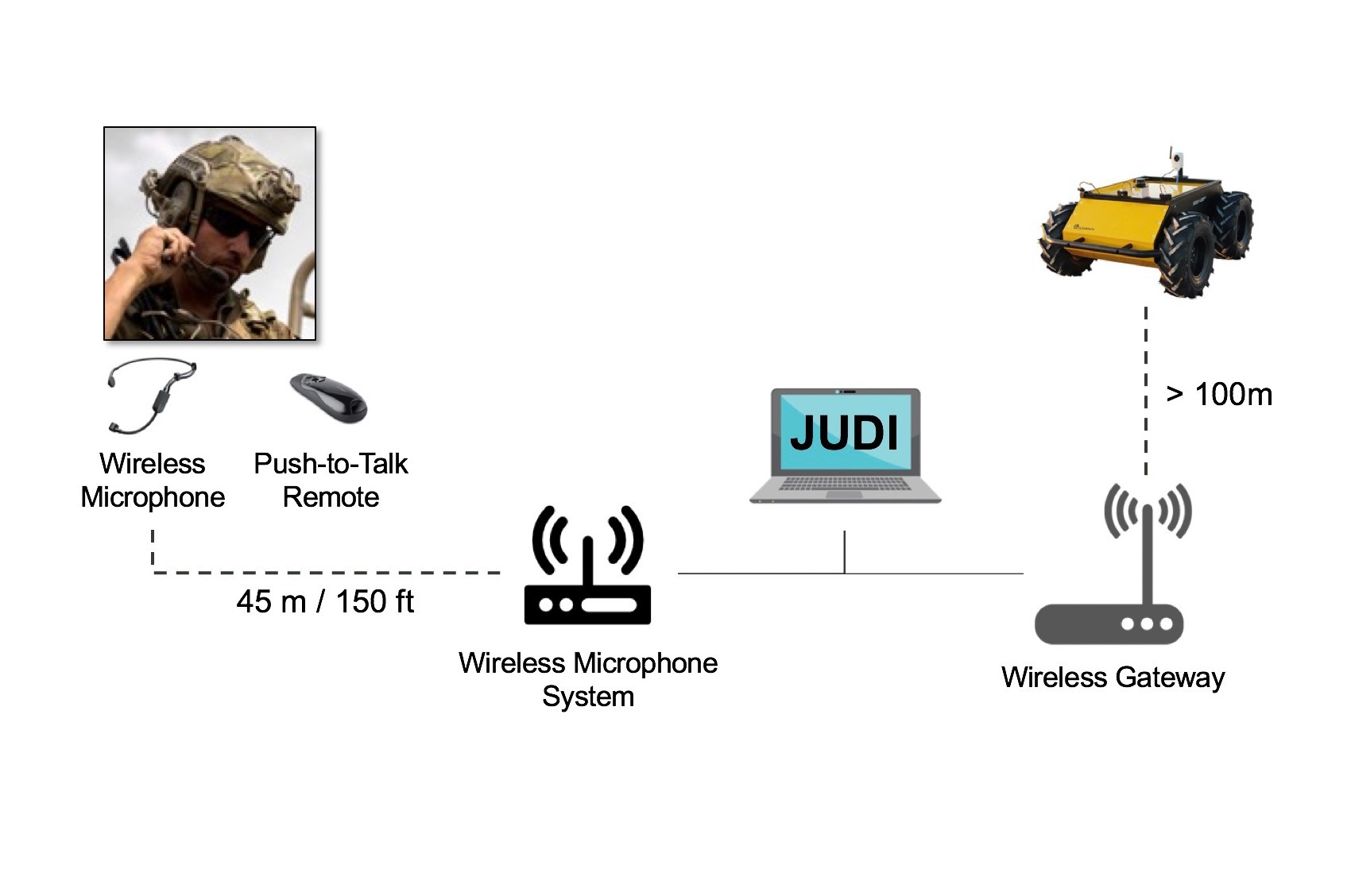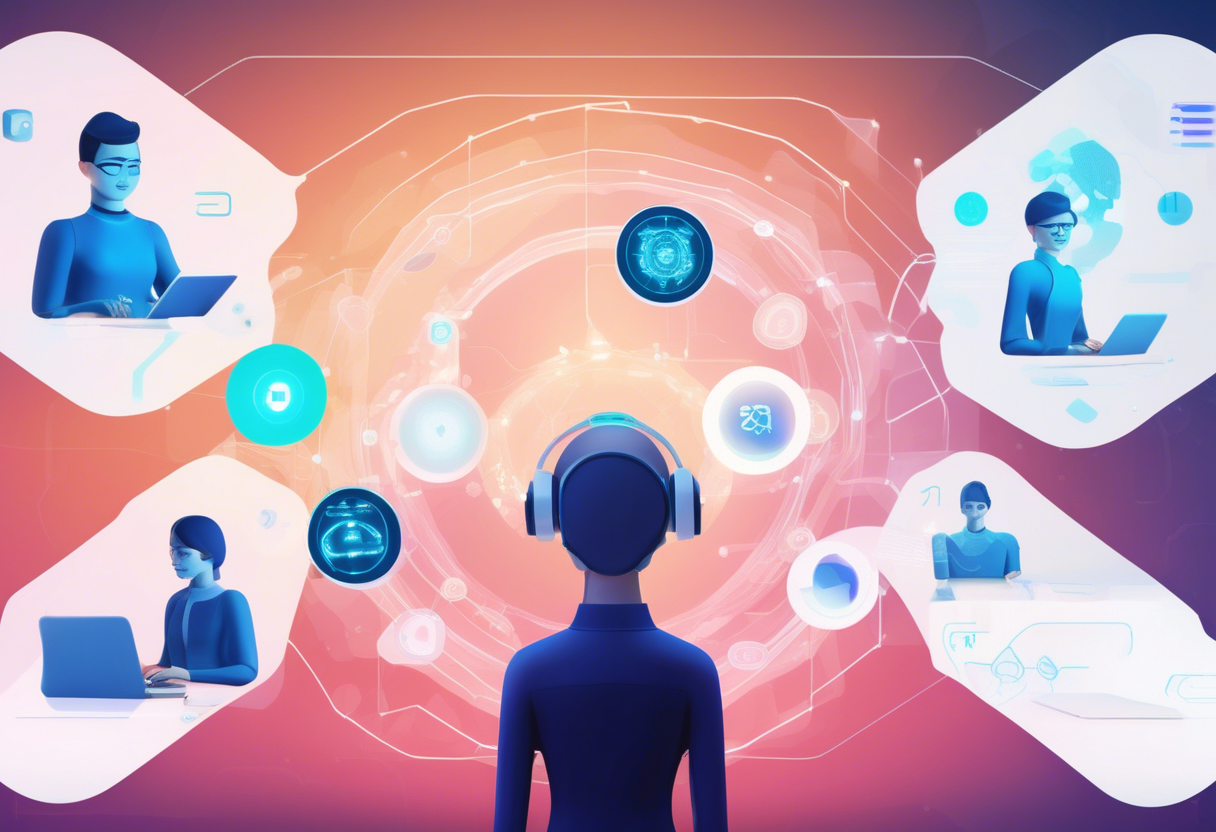
Businesses are always on the lookout for better ways to communicate and run things smoothly. That's where AI-powered communication tools come in. They're changing how companies talk to each other and their customers. And get this—72% of business leaders think AI gives them an edge. No wonder these tools are catching on fast! In this article, we'll explore AI-powered communication, giving you a simple guide to getting started. We'll look at the benefits and share real-life examples of how these tools work. Whether you're into tech or just want to keep your business up-to-date, this guide will help you understand AI in communication. Let's see how AI can boost your business communication!
Understanding AI-Powered Communication Tools
Exploring AI-Powered Communication Tools
AI-powered communication tools are software solutions that leverage artificial intelligence to enhance and streamline communication for individuals and businesses. Here are some examples:
- Writing Assistants: Tools like Grammarly provide real-time suggestions for grammar and style improvements.
- Transcription Services: Platforms such as Otter.ai convert spoken language into searchable text.
- Content Creation: AI models like ChatGPT assist in generating content and automating responses.
- Communication Management: Services like Emitrr manage calls and texts, learning and adapting over time.
AI's Impact on Business Communication
AI significantly enhances business communication by automating routine tasks, such as transcription and content creation, thus freeing up employees to focus on more strategic activities. Here’s how AI contributes:
-
Efficiency Boost: AI organizes messages and prioritizes urgent communications, leading to improved operational efficiency.

-
Customer Sentiment Analysis: It evaluates customer satisfaction and engagement, providing insights for better interactions.
-
Enhanced Collaboration: Tools like Emitrr personalize customer communications, while platforms like Slack AI automate workflows and summarize conversations to enhance productivity.
By integrating AI into communication processes, businesses can achieve more effective teamwork and improved customer relations.
Step-by-Step Guide to Implementing AI-Powered Communication Tools
Strategic Plan for AI-Powered Communication
Define Objectives for AI-Powered Communication Integration
To get started with AI-powered communication tools, you need to pinpoint why you're doing it and what you hope to achieve. This means aligning AI with your business goals and tackling any communication issues you face.
Consider the following objectives:
- Speed up response times
- Boost customer satisfaction
- Enhance internal communication
By setting these goals clearly, you can make sure the AI tools support your organization's bigger picture.
Identify Communication Areas for AI Enhancement
Figuring out where AI can help in communication is key to getting the most out of it. AI can streamline routine tasks, improve teamwork, and help make decisions based on data.

For example:
- AI chatbots can handle customer questions.
- AI-driven analytics can provide insights into communication effectiveness.
By spotting these areas, you can focus your energy and resources where AI will make the most difference.
Address AI Integration Challenges and Solutions
Expecting challenges and having plans to tackle them is crucial for smooth AI integration. Common hurdles include:
- Data security
- User pushback
- Integration with existing systems
To handle these, consider:
- Rolling out AI in phases
- Offering targeted training
- Setting up feedback loops
For instance, strong security measures can ease privacy worries, and getting employees involved early can help overcome resistance and encourage a culture open to change.
Plan Phased AI Deployment Timeline
A phased timeline for deploying AI tools helps you stay organized. Start with pilot programs to test and tweak AI tools with a small group before going all in. This approach allows you to:
- Troubleshoot issues
- Avoid disrupting daily operations
By collecting feedback and adjusting as needed during the pilot phase, you can ensure a smoother transition to full deployment.
Budget and Resources for AI Implementation
Setting a budget and allocating resources is key to adopting AI sustainably. This includes:
- Covering tech costs
- Providing training
- Offering ongoing support
Be strategic with your resources, ensuring key people are available at each stage. Also, keep an eye on hidden costs like maintenance to avoid budget surprises.
Assess Communication Needs and Stakeholders
Analyze Current Communication Workflow for AI Opportunities
Take a good look at how communication flows now to spot inefficiencies and pain points where AI can help. This might mean finding:
- Bottlenecks
- Repetitive tasks
- Areas prone to human error

Data-driven assessments can highlight where AI could cut down manual work or improve targeting. Employee feedback can offer insights into everyday challenges and guide your choice of AI solutions.
Conduct Stakeholder Analysis for AI Adoption
Understanding what users need and expect is crucial for tailoring AI solutions. Engage in audience analysis and stakeholder mapping by:
- Talking to department heads and employees
- Gathering insights on their needs, expectations, and concerns about AI
Recognizing that different teams have unique requirements helps prioritize solutions. This understanding will help tailor AI solutions to meet diverse user needs effectively.
Research and Select Appropriate AI Solutions
Explore AI Technologies for Communication Goals
Look into AI technologies that fit your strategic goals to pick the right solutions. Consider:
- Natural language processing for chatbots
- Voice AI for call centers
- AI-driven analytics for insights
Evaluate what each technology can do and how it fits your strategic needs. This ensures the chosen AI solutions align with your objectives and deliver the desired outcomes.
Choose Scalable AI Tools for Seamless Integration
Pick AI tools that can grow with you and fit into your current systems. This reduces disruption and makes adoption smoother. Consider:
- User-friendly no-code AI solutions for quick deployment
- API flexibility for developers
Choosing tools that offer flexibility and customization lets you tailor them to your unique communication environment.
Prioritize Use Cases and Match Problems to AI Tools
Match Communication Challenges with AI Solutions
Make a list of communication problems and pair them with AI solutions. For example:
- If slow responses are an issue, automated replies can help.
- If analyzing data is tough, AI-driven analytics can be the answer.
By matching problems with the right AI tools, you can deploy AI where it's needed most and make the biggest impact.
Prioritize AI Use Cases for Maximum Impact
Focus on use cases that promise a big impact, are likely to be adopted, and fit your resource limits. Start with manageable pilot projects to show value and build confidence before scaling up. This approach ensures resources are used effectively and AI tools are deployed where they can deliver quick wins and showcase their value.
Develop a Detailed Implementation and Change Management Plan
Plan AI System Integration Steps
Carefully plan how to fit AI tools into your current systems without causing chaos. Outline each step, from setup to full deployment. Work with IT teams and allocate resources to handle technical needs like data migration and API integration, ensuring a smooth transition.
Define New Roles for AI-Powered Communication
Redefine roles to include AI tools in daily work. Clearly communicate these changes and show how AI supports tasks rather than replaces them. Assign specific responsibilities for managing AI tools to ensure accountability and smooth operations.
Prepare AI Training Programs for Teams
Create training programs using videos, webinars, and guides to get your team ready and confident with AI tools. Cover tool functions, benefits, and new processes. Hands-on training builds confidence and competence. Encourage ongoing learning to deepen understanding of AI.
Establish Change Management for AI Adoption
Set up change management strategies like phased rollouts, feedback systems, and continuous support to encourage adoption. Communicate AI benefits clearly, address fears, and foster a culture of innovation. Provide help desks or AI champions to assist with challenges during the transition.
Execute Deployment and Monitor Performance
Implement AI Tools According to Timeline
Deploy AI tools according to your phased timeline for an organized rollout. Start with pilot groups and expand gradually, gathering feedback and adjusting as needed. This ensures everyone is informed and prepared, minimizing disruption and maximizing AI benefits.
Monitor AI Performance and User Feedback
Set up systems to watch for technical issues and gather user feedback to spot problems early. Regular check-ins with AI users and automated performance tracking help address issues quickly. Use feedback to improve and optimize AI performance.
Track AI Performance with Key Metrics
Track KPIs like user adoption rates, communication improvements, and ROI to assess AI's impact. Regularly review these KPIs to check progress towards goals and use the data to make informed decisions about future AI initiatives.
Evaluate and Adjust
Evaluate AI Impact on Communication Objectives
Regular evaluations help check if AI tools meet expected outcomes and align with goals. Compare actual performance with initial goals to spot success and gaps. Use this info to refine strategies and make adjustments to keep AI effective.
Continuously Improve AI Tool Performance
Use an iterative approach to enhance AI tool performance. Make small changes based on evaluations to improve accuracy and usability. Continuous improvement ensures AI tools deliver desired outcomes and support objectives.
Update AI Training and Communication Resources
As AI evolves, update training and communication materials to reflect changes. Make sure all team members have access to the latest info and resources. This supports continuous improvement and keeps AI tools effective.
Communicate AI Rollout and Foster Adoption
Develop AI Communication Strategy for Stakeholders
Create an AI communication strategy that clearly explains the purpose, benefits, and changes AI tools bring to stakeholders. Include clear messaging about AI integration, benefits, and workflow changes. Use multiple channels like emails and meetings to reach everyone.
Use Clear Messaging to Promote AI Benefits
Craft clear messages to build awareness and reduce resistance to AI tools. Highlight success stories to show AI's value and address concerns. Provide transparency and support to build trust and encourage buy-in.
Maintain Stakeholder Engagement for AI Success
Keep engaging stakeholders throughout AI integration to sustain momentum and ensure long-term support. Regularly solicit feedback and respond to concerns to reinforce AI benefits. Celebrate milestones to encourage engagement and support.
Benefits of AI-Powered Communication Tools
Enhancing Customer Service with AI-Powered Communication
AI chatbots and virtual assistants are revolutionizing customer service by offering 24/7 support, ensuring help is always available. These tools efficiently manage routine tasks like sorting emails and scheduling meetings, allowing employees to focus on more complex issues. Additionally, AI analyzes customer data to create more personalized and engaging interactions. Sentiment analysis tools monitor public opinion, enabling companies to respond promptly and enhance service quality. AI agents significantly reduce response times by up to 21 times and resolve queries 50% faster, streamlining operations.

Personalizing Business Communication with AI
AI leverages big data to tailor marketing messages and internal communications, making them more relevant and engaging. AI-powered platforms facilitate the creation of personalized PR campaigns that resonate with audiences. This customization extends to internal communications, enhancing interaction. For global teams, AI translates messages into various languages, ensuring inclusivity and understanding across diverse teams.
Automating Content Creation with AI Tools
AI tools streamline content creation by taking over tasks such as drafting press releases and social media posts, thus optimizing workflows. They manage scheduling and reminders, reducing workload and ensuring timely delivery. AI can even suggest ideas to inspire team discussions. By automating routine tasks, AI enables professionals to concentrate on strategic work that truly matters.
Improving Decision-Making with AI-Powered Insights
AI processes communication data swiftly, providing real-time insights to inform decision-making. AI-powered analytics offer feedback on communication effectiveness, allowing for quick adjustments to strategies. Data-driven storytelling uncovers audience preferences, aiding in the creation of compelling narratives. AI organizes workflow data, facilitating information sharing and enabling data-driven decision-making.

Real-World Applications of AI-Powered Communication
AI in Industry-Specific Communication
In the telecom world, around 90% of companies leverage AI to enhance services, gain deeper customer insights, and predict network issues. AI contributes to cost reduction by automating tasks such as network planning and problem detection.
In public relations, AI plays a pivotal role by handling tasks like writing press releases, analyzing media, and conducting sentiment analysis to inform communication strategies. It transforms job roles by automating routine tasks and crafting personalized sales plans through voice data analysis.
Enhancing Internal and External Communication with AI
AI enhances internal communication by centralizing updates, identifying bottlenecks, and assisting teams in prioritizing tasks. It can even assess employee morale using sentiment analysis, enabling management to intervene proactively.

On the customer side, AI chatbots manage straightforward inquiries, allowing human agents to concentrate on more complex issues. Additionally, personalized marketing and data-driven narratives keep audiences engaged. AI-driven personalization and real-time assistance further support human agents, enhancing overall communication.
FAQs on AI-Powered Communication Tools
How Can AI-Powered Communication Improve Customer Service?
AI tools can significantly enhance your customer service operations. They provide instant replies with AI assistants that welcome customers, collect essential information, and address basic queries automatically. This reduces missed connections and streamlines processes.

AI also personalizes interactions by tailoring messages based on user behavior, preferences, and previous inquiries, making communication more relevant. Moreover, AI-powered platforms enable you to manage SMS, email, phone, and chat from a single interface, ensuring no message is overlooked.
Routine tasks, such as follow-ups and status updates, can be automated, accelerating operations. With real-time call transcriptions and summaries, your team gains a better understanding of customer needs, enhancing service delivery.
Challenges of Integrating AI-Powered Communication Systems
Integrating AI into existing communication systems presents several challenges. Synchronizing data and messages across various platforms can be a daunting task. Switching between applications is inefficient, and achieving seamless integration is often difficult.
AI must grasp the context and nuances of human communication to minimize errors. Data privacy and security are also critical concerns when AI accesses sensitive information, necessitating careful compliance.
Training AI to handle industry-specific language and questions requires extensive data and continuous adjustments.
How AI-Powered Communication Enhances Personalization
AI enhances personalized communication by analyzing user behavior and past interactions to craft messages that align with each customer's preferences and needs. Generative AI can create custom content, such as personalized emails, boosting engagement.

Additionally, AI employs sentiment analysis to detect the emotional tone of messages, allowing businesses to adjust their approach accordingly. Automating follow-ups and scheduling based on customer responses ensures communication remains timely and relevant.
Multi-channel AI platforms maintain consistent personalization across SMS, email, voice, and chat, ensuring a seamless customer experience.